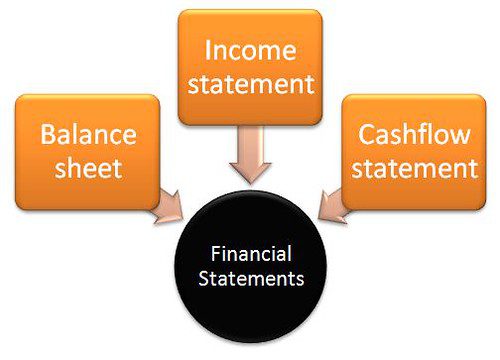
Table of Contents
Understanding the Basics of Retirement Accounts
Understanding the Basics of Retirement Accounts: Planning for retirement is one of the most important financial steps you can take in your life. For many people, the idea of saving for a time decades away may feel overwhelming, but the earlier you begin, the easier the process becomes. At the center of any retirement strategy are retirement accounts, which are financial tools specifically designed to help individuals save and grow money for their future. Understanding the basics of these accounts, how they work, and the benefits they offer can empower you to make smarter financial choices that will serve you well in the long run.

Why Retirement Accounts Matter
Retirement accounts exist to encourage individuals to set aside money for the future rather than relying only on pensions or government support. These accounts often come with tax advantages, growth opportunities, and protection from impulsive spending. The money saved in retirement accounts can grow over decades through compounding returns, which is essentially the process of earning interest or returns not only on your contributions but also on the growth your money has already achieved.
By using retirement accounts strategically, you are preparing yourself for financial independence in your later years. Without them, many people would struggle to maintain their lifestyles once they stop working.
The Role of Tax Benefits
One of the key advantages of retirement accounts is the tax benefit. Governments often provide incentives to encourage individuals to save for retirement because it reduces future dependency on public welfare. Some accounts allow contributions to be made with pre-tax income, lowering your taxable income in the present while deferring taxes until you withdraw the funds in retirement. Other accounts work the opposite way, where you contribute after-tax dollars but your withdrawals during retirement are tax-free.
Both options provide powerful tools for long-term wealth building, and understanding which one fits your needs best can make a huge difference in your financial plan.

Employer-Sponsored Retirement Accounts
Many people first encounter retirement savings through employer-sponsored accounts. These are programs set up by companies to help their employees save for the future, often with added benefits like matching contributions. If your employer offers one, this is typically the easiest way to begin your retirement journey.
Employer-sponsored plans allow workers to contribute a portion of their paycheck directly into a retirement account before they even see the money. This not only makes saving effortless but also reduces the temptation to spend. Some employers even match contributions up to a certain percentage, which is essentially free money toward your retirement savings.
Individual Retirement Accounts (IRAs)
For people who don’t have access to an employer-sponsored plan or who want to save additional money for retirement, Individual Retirement Accounts (IRAs) are a common option. An IRA is a personal account that allows individuals to contribute a set amount each year, often with tax benefits similar to employer-sponsored plans.
There are different types of IRAs, each with unique advantages. Traditional IRAs typically provide tax deductions on contributions, but withdrawals in retirement are taxed. Roth IRAs, on the other hand, are funded with after-tax dollars, meaning there’s no immediate tax break, but qualified withdrawals in retirement are tax-free. Both accounts are designed to help people save independently and grow wealth over time.
The Power of Compound Growth
The biggest benefit of starting a retirement account early is compound growth. Over time, even small contributions can grow into significant sums because of compounding. When your investments earn returns, those returns are reinvested and can themselves begin to generate returns. This cycle repeats year after year, creating exponential growth that can turn modest savings into a large retirement fund.
This is why financial experts emphasize beginning as early as possible. Even if you can only contribute a small amount, the length of time your money has to grow can have a dramatic effect on your final savings.
Understanding Contribution Limits
Retirement accounts typically come with annual contribution limits set by the government. These limits exist to prevent high-income earners from placing unlimited amounts of money into tax-advantaged accounts. While the exact numbers vary depending on the account type and your age, staying aware of these limits helps you maximize your contributions without exceeding regulations.
In addition, some accounts offer catch-up contributions for individuals over a certain age, allowing older savers to put away extra money as they get closer to retirement. This feature provides a valuable opportunity for those who may have started saving later in life.

Withdrawal Rules and Penalties
Retirement accounts are designed for long-term savings, which is why they come with withdrawal rules and penalties for early access. Withdrawing money before the designated retirement age can result in taxes and penalties that reduce your savings. These restrictions encourage you to leave your funds untouched so they can grow until you truly need them.
At the same time, retirement accounts have required minimum distributions (RMDs) once you reach a certain age. These rules prevent individuals from keeping money in the account indefinitely without paying taxes. Planning for these withdrawals ensures you meet legal requirements while maintaining a steady income during retirement.
Choosing Investments Within Retirement Accounts
While retirement accounts provide the tax-advantaged framework, the money inside is usually invested in a variety of assets such as stocks, bonds, and mutual funds. The specific mix of investments depends on your risk tolerance, time horizon, and financial goals. Younger investors may prefer growth-oriented investments like stocks because they have more time to ride out market fluctuations, while older investors often shift toward safer options like bonds to preserve their savings.
Understanding your investment options within a retirement account is just as important as choosing the account itself. A poorly chosen portfolio can underperform and leave you with less money than you expected, while a well-structured strategy can help you achieve long-term success.
Balancing Retirement Accounts with Other Goals
Saving for retirement should not come at the expense of other important financial goals. It’s crucial to strike a balance between contributing to your retirement accounts and managing short-term priorities like building an emergency fund, paying off debt, or saving for a home. The key is consistency. Even if you can only contribute a small amount to your retirement account while handling other obligations, maintaining steady contributions ensures that you continue building your future security.
The Importance of Diversification
Diversification is a cornerstone of retirement investing. Because retirement accounts can hold a wide range of investments, spreading your money across different asset classes helps reduce risk. For example, if the stock market experiences a downturn, having bonds or other assets in your portfolio can soften the impact. Diversification protects your retirement savings from relying too heavily on a single investment’s performance.
Retirement Accounts for Self-Employed Individuals
Not everyone has an employer to provide retirement plans. For freelancers, entrepreneurs, and self-employed professionals, there are specialized accounts that allow them to save for retirement with similar tax advantages. These include accounts designed specifically for individuals who run their own businesses, offering higher contribution limits and flexibility to suit their needs.
Self-employed individuals often face the challenge of managing irregular income, but setting up a retirement account provides structure and discipline for building long-term security.
How Inflation Affects Retirement Savings
When planning for retirement, it’s important to account for inflation. Over time, the purchasing power of money decreases, which means the amount you save today may not go as far in the future. Retirement accounts that invest in growth-oriented assets can help combat inflation by generating returns that outpace the rising cost of living. Ignoring inflation can result in falling short of your retirement needs, so it should always be factored into your planning.
Long-Term Discipline and Patience
Perhaps the most underrated aspect of retirement accounts is the discipline they require. Retirement planning is not a quick win but a lifelong journey that demands patience. It can be tempting to withdraw money for short-term needs, chase risky investments, or delay contributions, but staying consistent pays off. The structure of retirement accounts encourages disciplined behavior by limiting access and rewarding long-term savers with tax benefits and compounding growth.
Preparing for Retirement Beyond the Accounts
While retirement accounts form the foundation of your financial independence, they are not the only factor in planning for your later years. Healthcare costs, lifestyle choices, and estate planning are all important pieces of the puzzle. A retirement account provides the resources, but how you use them depends on your overall financial plan. By combining disciplined saving with thoughtful planning, you can create a secure and fulfilling retirement.
Final Thoughts
Understanding the basics of retirement accounts is the first step toward building a secure financial future. These accounts are designed to encourage saving, provide tax benefits, and grow your money over time through compounding. Whether you participate in an employer-sponsored plan, open an IRA, or create a specialized account as a self-employed individual, the principles remain the same: start early, stay consistent, and let time work in your favor.
Retirement accounts may seem complex at first, but with a little knowledge and commitment, they become powerful tools for achieving long-term financial freedom. The key is to view them not as optional, but as essential. By making use of the opportunities they provide, you can approach your future with confidence, knowing that you’ve taken meaningful steps to secure your financial independence.
Also visit:-
10 Simple Ways to Bring Romance Back into Your Marriage
FAQs on Understanding the Basics of Retirement Accounts
Q1. What is a retirement account?
A retirement account is a financial account designed to help individuals save and invest money for use later in life, typically offering tax benefits and long-term growth opportunities.
Q2. Why should I open a retirement account?
You should open a retirement account because it helps you save consistently, offers tax advantages, and ensures financial independence after you stop working.
Q3. What are the main types of retirement accounts?
The main types include employer-sponsored accounts like 401(k)s and 403(b)s, as well as personal accounts like Traditional IRAs and Roth IRAs.
Q4. How do employer-sponsored retirement accounts work?
Employer-sponsored accounts let employees contribute part of their paycheck to a retirement fund, often with the benefit of employer matching contributions.
Q5. What is an IRA?
An IRA, or Individual Retirement Account, is a personal savings account with tax advantages that anyone can open to save for retirement.
Q6. What’s the difference between a Traditional IRA and a Roth IRA?
Traditional IRAs offer tax-deferred growth, while Roth IRAs allow tax-free withdrawals in retirement since contributions are made with after-tax dollars.
Q7. When should I start saving for retirement?
The best time to start saving is as early as possible. Starting young allows your money more time to grow through compounding.
Q8. How does compound growth help retirement savings?
Compound growth means your earnings generate additional earnings over time, creating exponential growth of your retirement savings.
Q9. Can I have more than one retirement account?
Yes, you can have multiple retirement accounts, but you must follow contribution limits across them.
Q10. What are contribution limits for retirement accounts?
Contribution limits are the maximum amounts you can deposit into retirement accounts each year, set by the government and adjusted periodically.
Q11. What are catch-up contributions?
Catch-up contributions are additional amounts that individuals over 50 can contribute to their retirement accounts to boost savings.
Q12. Can I withdraw money early from a retirement account?
Yes, but early withdrawals often come with taxes and penalties unless you qualify for certain exceptions.
Q13. What are required minimum distributions (RMDs)?
RMDs are mandatory withdrawals that must be taken from some retirement accounts once you reach a certain age, typically 73.
Q14. What happens if I don’t take RMDs?
If you don’t take RMDs, you may face significant IRS penalties in addition to paying the required taxes.
Q15. Are retirement accounts safe from inflation?
Retirement accounts aren’t automatically inflation-proof, but investing in assets that outpace inflation can help preserve your purchasing power.
Q16. How do I decide which investments to hold in my retirement account?
The choice depends on your risk tolerance, time until retirement, and financial goals. Diversification is key.
Q17. Can self-employed people open retirement accounts?
Yes, self-employed individuals can open accounts like SEP IRAs, SIMPLE IRAs, or Solo 401(k)s.
Q18. What is the benefit of an employer match?
An employer match is free money contributed by your employer to your retirement account, boosting your savings.
Q19. Can I lose money in a retirement account?
Yes, since funds are usually invested in markets, short-term losses are possible, but long-term growth is typical.
Q20. Do I pay taxes on retirement account withdrawals?
With Traditional accounts, you pay taxes on withdrawals. With Roth accounts, qualified withdrawals are tax-free.
Q21. How do I choose between a Roth and Traditional IRA?
The choice depends on whether you prefer a tax break now (Traditional) or tax-free withdrawals later (Roth).
Q22. Can I contribute to both a 401(k) and an IRA?
Yes, you can contribute to both, though income limits may affect tax deductions for IRA contributions.
Q23. Are retirement accounts protected from creditors?
Many retirement accounts have certain protections from creditors, but rules vary by account type and state laws.
Q24. What if I change jobs?
You can usually roll over your employer-sponsored retirement account into your new employer’s plan or into an IRA.
Q25. Do retirement accounts charge fees?
Yes, many accounts include administrative or investment management fees, which can vary by provider.
Q26. How much should I save for retirement?
The amount depends on your income, lifestyle goals, and how long you expect to live in retirement.
Q27. Can I pass retirement accounts to heirs?
Yes, most retirement accounts allow you to name beneficiaries who inherit the funds after your passing.
Q28. What is a Roth 401(k)?
A Roth 401(k) is an employer-sponsored plan that combines features of a 401(k) with the tax-free withdrawals of a Roth IRA.
Q29. Are retirement accounts insured?
Retirement accounts held at banks may be insured up to certain limits, while investments carry market risks.
Q30. How often should I review my retirement accounts?
It’s wise to review at least once a year to adjust contributions, investments, and ensure alignment with your goals.
Q31. Can I borrow from my retirement account?
Some employer plans allow loans against your balance, but this can reduce your growth potential.
Q32. What is the penalty for early withdrawals?
Typically, early withdrawals before age 59½ come with a 10% penalty plus regular income taxes.
Q33. What is a rollover IRA?
A rollover IRA is an account created when you move funds from an old retirement account without paying taxes.
Q34. Do retirement accounts affect financial aid for college?
Retirement accounts are generally not counted as assets for federal financial aid, but withdrawals can affect income.
Q35. Should I hire a financial advisor for retirement planning?
A financial advisor can help you create a personalized retirement strategy and optimize account choices.
Q36. Can I stop contributing to my retirement account?
Yes, contributions are usually voluntary, though stopping may delay your progress toward your retirement goals.
Q37. What happens to my account if I leave it untouched?
Your investments will continue to grow, but once you reach RMD age, you must begin taking distributions.
Q38. How do retirement accounts help with long-term discipline?
Rules and tax benefits encourage you to keep money invested until retirement, preventing impulsive spending.
Q39. Are retirement accounts the same worldwide?
No, each country has its own retirement account systems, tax rules, and contribution limits.
Q40. What is the biggest advantage of retirement accounts?
The biggest advantage is the combination of tax benefits and compound growth, which makes saving for retirement more effective.
Also visit:-



